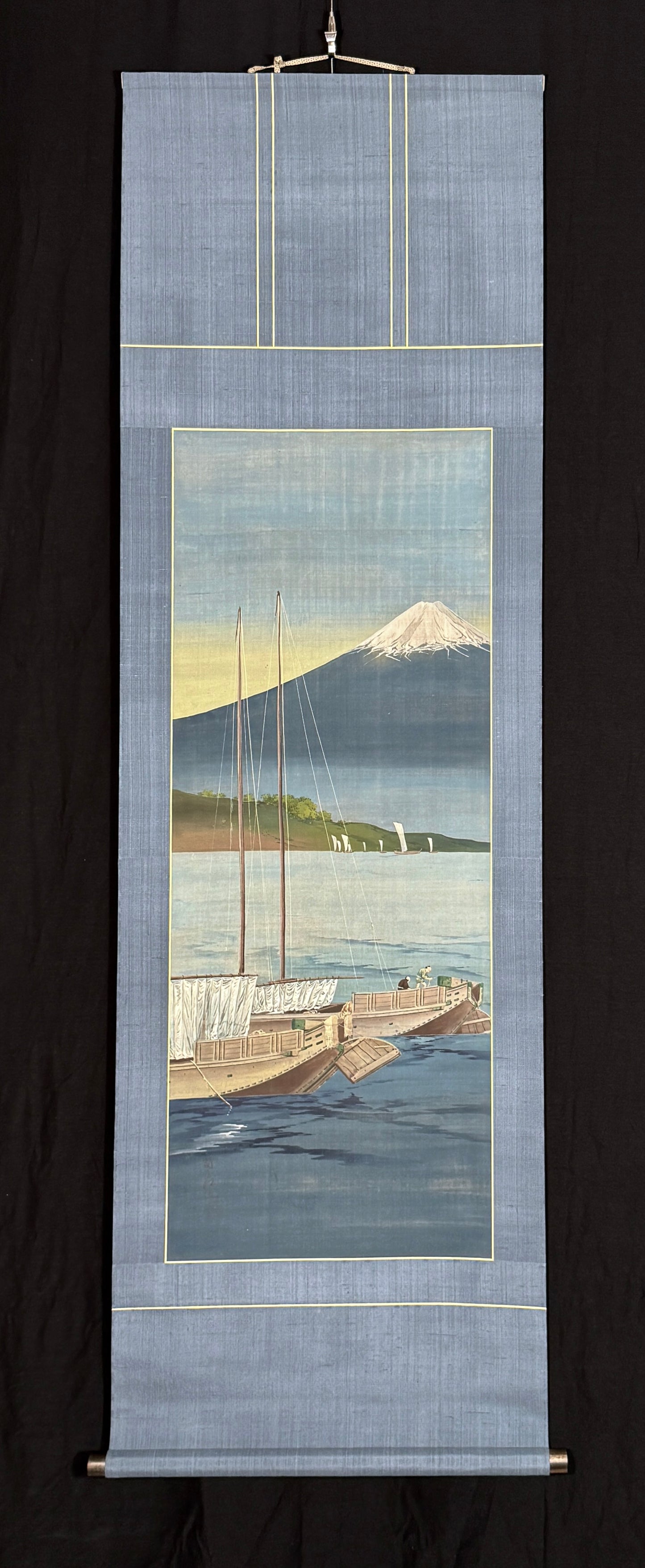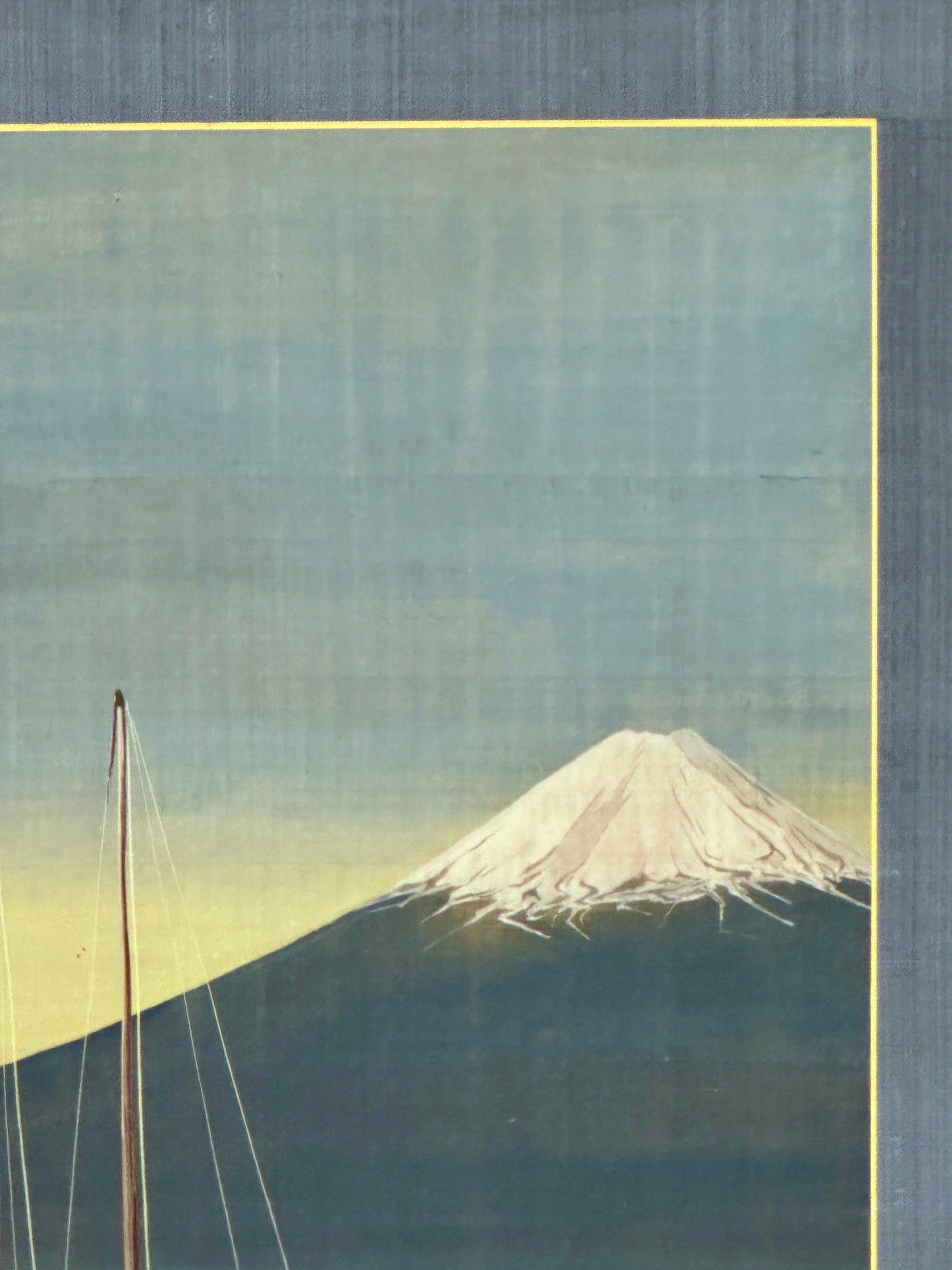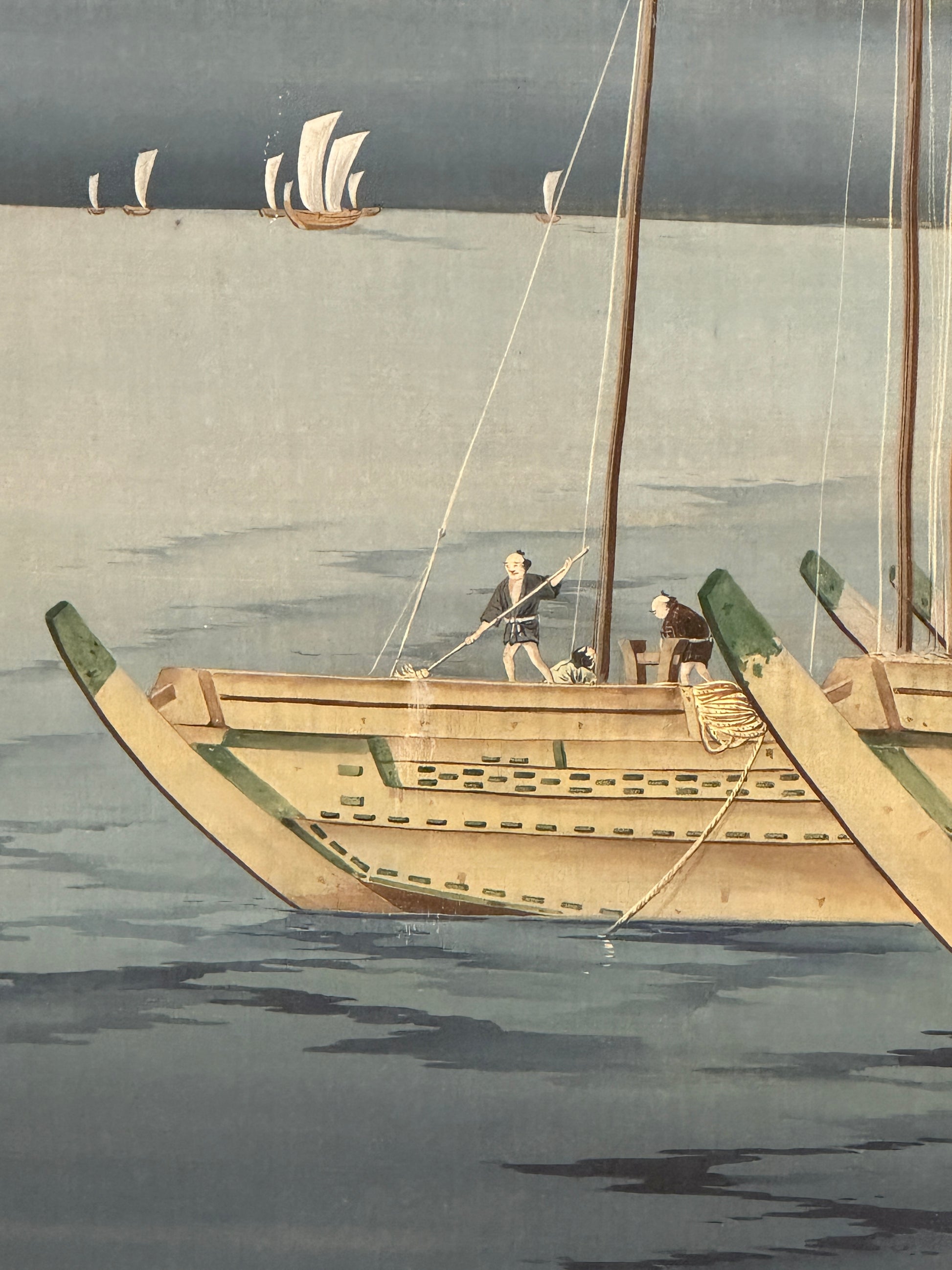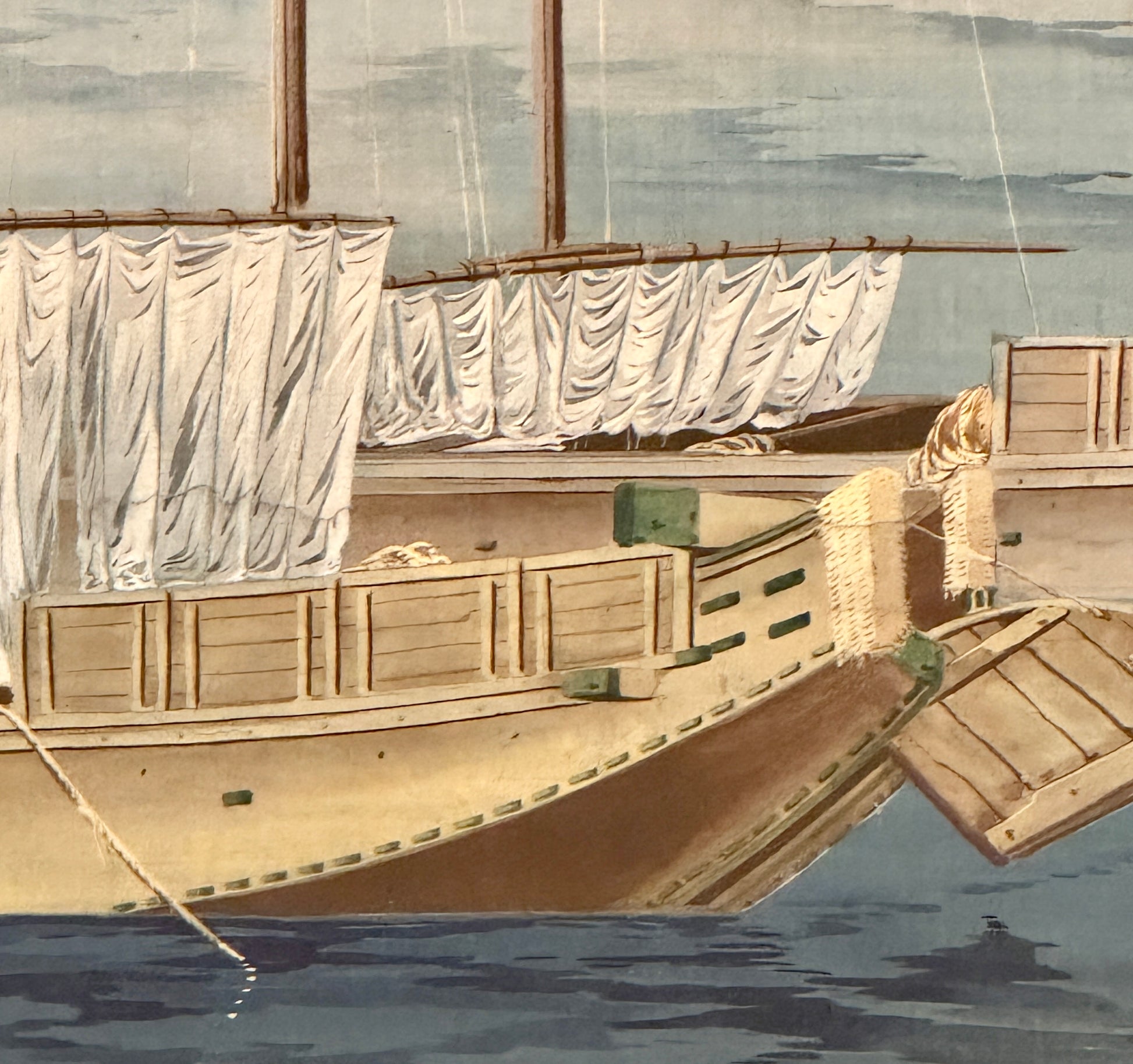Guignard Kyoto Collection
Diptych Fuji with seascape | Shiba Kōkan 司馬江漢 | 1747-1818
Diptych Fuji with seascape | Shiba Kōkan 司馬江漢 | 1747-1818
Couldn't load pickup availability
Shiba Kōkan is one of the most peculiar personalities in Japanese art history. He has two completely different faces, almost schizophrenically. One belongs to the woodcut artist Suzuki Harushige. He was given this name by his great teacher Suzuki Harunobu, one of the great ukiyo-e artists of his time. Kōkan imitated his master, and his woodcuts were often mistaken for those of his teacher (with a forged signature). But his woodcuts would never have made him stand out from the multitude of ukiyo-e graphic artists of his time.
But then there is his other side: an encounter with European painting on the quasi "ghetto island" of Deshima in Nagasaki shocked him so much that he immersed himself in the study of European oil painting and etching with an intensity that none of his contemporaries could match. Maruyama Ōkyō, fourteen years his senior, is considered the pioneer of the assimilation of Western art in the 18th century and masterfully introduced realism, perspective and uniform lighting into Japanese art grammar. Kōkan was less disciplined (and in some pictures less skillful) than the genius Maruyama, but his pictures have a glow that can border on the surreal. The almost Mediterranean blue of this bay in front of Mount Fuji has never been experienced as intensely in the history of art as in this diptych. One is reminded of pictures of the Gulf of Capri with Vesuvius in the background. But the little sailors on the ships quickly bring us back to Japan. Another speciality of Kōkan is his western signature - it is decorative and non-binding and a little different each time - in this respect too he is a complete outsider.














